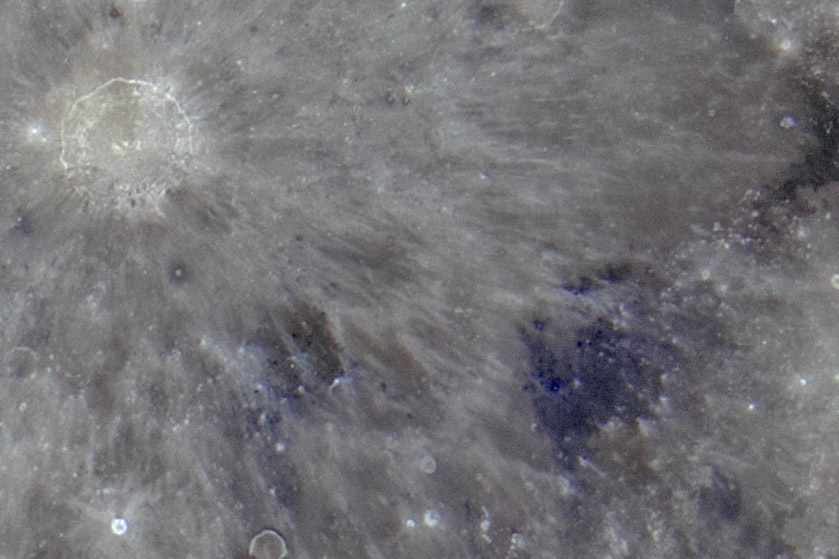November 4, 2021
Blue Spots
Originally published December 21, 2011

image by Rolf Hempel, Buchholz, Germany
Rolf was aware of the broad dark patches southeast of Copernicus but when he saw a number of very small blue dots in the same area he wondered if he had dust on the camera sensor. I have enhanced his full Moon image to emphasize the spots. They are definitely there and they are real. A clue to their origin is provided by the biggest one, Copernicus H, a 4.6 km wide impact crater just south and a little east of Copernicus. This is a dark halo crater (DHC), formed by the ejection of mare lavas that lie beneath Copernicus' bright ray material. These smaller blue spots have the same origin. There are actually dozens of DHC here. But the material they excavated and tossed onto the surface may be pyroclastics - volcanic ash. The broad dark patches are pyroclastics, explaining the blue - titanium-rich - colors.
Chuck Wood
Technical Details
December 10, 2011, 21:44 UT. Apochromatic refractor 130/1200mm with effective focal length: 3575mm (using a Baader FFC projection system) + Canon 5D MK II, ISO 400, 1/100sec. 140 exposures of each quadrant, stacked with AviStack2 and combined with Panorama Studio 2 Prof.
Related Links
Rükl plate 32
Yesterday's LPOD: The Pacific View
Tomorrow's LPOD: Bright Blue Dot
COMMENTS?
Register, Log in, and join in the comments.



